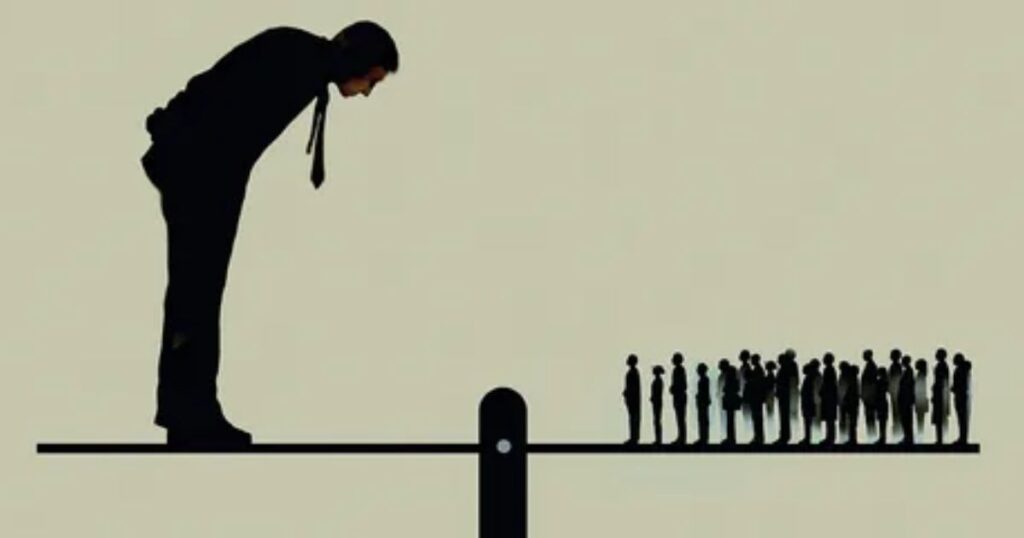Understanding the difference between Slip-up vs. Relapse: What’s the Difference? is crucial for anyone in recovery. While both terms are often used interchangeably, they have distinct meanings and impacts on the recovery process. A slip-up is a brief moment of returning to old habits, but it doesn’t mean all progress is lost. On the other hand, a relapse involves a full return to previous addictive behaviors, often for a longer period. Knowing the difference between Slip-up vs. Relapse: What’s the Difference? can help you manage setbacks in your recovery journey more effectively.
When navigating addiction recovery, understanding Slip-up vs. Relapse: What’s the Difference? can help prevent setbacks from derailing progress. Slip-ups are often triggered by emotional, environmental, or psychological factors, while relapses might occur when the recovery plan isn’t reinforced or when triggers aren’t addressed. It’s important to recognize the difference slip-up so that you can prevent a slip-up from turning into a relapse. Slip-up vs. Relapse: What’s the Difference? is a critical distinction that helps keep your recovery on track.
Understanding Setbacks in Porn Addiction Recovery
The journey of addiction recovery is not always smooth. There are ups and downs, and often, setbacks can be mistaken slip-up for a complete failure of the recovery process. Recognizing the difference between a slip-up and a relapse can be incredibly valuable, as it helps you determine the right steps to take in your recovery. In this section, we will dive into what setbacks in porn addiction recovery look like, and how you can effectively address them.
When it comes to setbacks in porn addiction recovery, they generally fall into two categories: slip-ups and relapses. Both are part of the recovery process, but they are distinct in their nature and implications.
The Lowdown on Spotting Setbacks

Understanding setbacks is critical to navigating recovery effectively. Spotting a setback early can help you avoid falling into old patterns. It can be easy to mistake a brief moment of weakness for a larger relapse, but recognizing whether you’re dealing with a slip-up or a relapse makes all the difference.
A slip-up is a small, often brief moment where you slip back into an old habit, but quickly recognize the behavior and stop before it escalates. A relapse, on the other hand, is a more extended return to old behaviors, where the individual returns to their addiction for a prolonged period, possibly ignoring their recovery process.
Recognizing the difference between a slip-up and a relapse will help you take proactive steps to manage setbacks and continue your recovery journey.
Knowing the Difference Between Slip-ups and Relapses
Understanding the difference between a slip-up and a relapse is key to navigating your recovery journey. It’s easy to get confused between the two, but recognizing the signs and knowing how to act is essential for maintaining progress.
| Aspect | Slip-up | Relapse |
| Duration | Short-term, isolated incident | Prolonged return to addictive behaviors |
| Frequency | Occasional, happens rarely | Continuous or repeated behavior |
| Impact on Recovery | Minor setback, not a total derailment | Significant setback, often leads to abandoning recovery efforts |
| Recognition | Quickly recognized and addressed | Often ignored or rationalized, harder to recognize initially |
| Level of Control | Temporary loss of control but quickly regained | Loss of control for an extended period |
| Behavioral Involvement | One-time lapse or brief return to old behavior | Full immersion into old habits |
| Emotional Response | Guilt or disappointment but manageable | Shame, hopelessness, or apathy |
| Triggers | Often triggered by stress or emotional situations | May involve a pattern of triggers leading to continued behavior |
| Prevention | Can be managed by recalibrating the recovery plan | Requires a more comprehensive reevaluation and reset of recovery efforts |
| Support System | Often used to address a slip-up and prevent recurrence | May involve more intensive therapy or group support |
Slip-up in Porn Addiction Recovery
A slip-up in porn addiction recovery is often seen as a minor setback, a temporary lapse in judgment or self-control. While it can feel like a big setback, it doesn’t necessarily mean you’ve lost all progress. A slip-up is usually a brief moment where old behaviors resurface but are quickly recognized and corrected.
Definition of a Slip-up
A slip-up in the context of porn addiction is typically an isolated incident where a person may have briefly watched porn or indulged in a related behavior, but then immediately recognized their mistake and stopped before it escalated into a full-blown relapse.
It’s important to note that a slip-up is not a sign of failure. It is an opportunity to assess the situation and figure out what went wrong. The key is how quickly you can bounce back and refocus on your recovery.
Common Triggers for Slip-ups
Slip-ups in porn addiction recovery are often triggered by various emotional, environmental, social, or psychological factors. Identifying these triggers can help you prevent future slip-ups and maintain progress.
Emotional Triggers
Emotional triggers can often set off a slip-up in recovery. These triggers can include feelings of stress, sadness, loneliness, or anger. When negative emotions are overwhelming, individuals may turn to familiar coping mechanisms, such as watching porn.
Environmental Triggers
Certain environments or situations can trigger a slip-up. For example, being alone at home or in a private, secluded space might increase the temptation to engage in addictive behaviors. Avoiding these environments or changing how you interact with them is important in minimizing the risk of slipping up.
Social Triggers
The people around you can also influence your recovery. Being in a situation where others are engaging in behaviors that trigger your addiction can increase the likelihood of a slip-up. This is why it’s important to surround yourself with individuals who are supportive of your recovery journey.
Psychological Triggers
Psychological triggers often stem from patterns of thinking and behavior that have been ingrained over time. These can include negative thought cycles, feelings of guilt or shame, or an internal struggle with your identity as a recovering addict. Working with a therapist to address these psychological triggers is essential to prevent future slip-ups.
Relapse in Porn Addiction Recovery

Unlike a slip-up, a relapse is a more serious setback that slip-up involves returning to old, destructive behaviors for a prolonged period. In the context of porn addiction recovery, a relapse means giving in to the addiction, often for an extended period, and neglecting your recovery efforts.
Definition of a Relapse
A relapse refers to a full return to addictive behaviors. This might mean repeatedly watching porn, engaging in compulsive behaviors, or abandoning recovery strategies altogether. Unlike a slip-up, which is short-lived, a relapse indicates a more significant, prolonged return to addiction.
Warning Signs of an Impending Relapse
Recognizing the warning signs of an impending relapse is vital in preventing it. These signs might include:
- Increased cravings: When the desire to watch porn becomes overwhelming and frequent.
- Isolation: Withdrawing from slip-up support systems or avoiding conversations about recovery.
- Complacency: A sense of “I don’t need to try anymore” or feeling like recovery isn’t working.
- Justifying behaviors: Convincing yourself that a small indulgence won’t hurt, leading to more significant lapses.
Coping Strategies
If you do face a relapse, it’s important to have coping strategies in place. These might include reaching out to a therapist or counselor, connecting with a support group, or practicing mindfulness techniques to stay grounded and focused on recovery.
How to Handle Slip-ups Effectively
While slip-ups can be frustrating, they don’t have to be devastating. Knowing how to handle a slip-up effectively can prevent it from escalating into a full-blown relapse. Here’s how to handle a slip-up:
- Acknowledge the slip-up: Don’t ignore it. Recognize that you’ve made a mistake and take responsibility.
- Analyze what happened: Reflect on what triggered the slip-up and identify any patterns or weaknesses.
- Use your support system: Share your experience with someone who can offer guidance and support.
- Refocus on your recovery: Reaffirm your commitment to the recovery process and take steps to prevent a recurrence.
Preventing Escalation from a Slip-up to a Relapse

One of the most critical aspects of recovery is preventing a slip-up from turning into a relapse. Here’s how to do that:
- Stay accountable: Talk to someone you trust about the slip-up. This will help you avoid internalizing shame and guilt.
- Adjust your strategies: If a specific trigger led to the slip-up, find ways to manage or avoid that trigger in the future.
- Focus on the bigger picture: Remind yourself of your progress and long-term goals. A slip-up is just a temporary setback, not a sign of failure.
Start Your Journey to Freedom Today
Recovery from porn addiction is not easy, but it’s possible due to slip-up. Understanding the difference between a slip-up and a relapse will empower you to take control of your journey. Remember, setbacks are a part of the process, but with the right strategies and support, you can overcome them and continue moving forward.
If you or someone you know is struggling with porn addiction, don’t wait any longer. Start your journey to freedom today by reaching out for help and committing to the recovery process. With perseverance, you can regain control of your life and continue building the future you deserve.
FAQ’s
What is the difference between a relapse and a slip-up?
A slip-up is a brief moment of returning to old habits, while a relapse is a more sustained return to addictive behaviors. Understanding Slip-up vs. Relapse: What’s the Difference? is key.
What is the difference between a smoking slip and a relapse?
A smoking slip may involve just one cigarette, whereas a relapse is when you return to regular smoking. It’s important to know the difference in Slip-up vs. Relapse: What’s the Difference?
What is the true meaning of relapse?
Relapse refers to the full return to addictive behaviors after a period of sobriety. Knowing Slip-up vs. Relapse: What’s the Difference? helps distinguish temporary lapses from lasting setbacks.
What’s the difference between a relapse and a prolapse?
A relapse is a return to harmful behavior, while a prolapse refers to a medical condition. When it comes to recovery, Slip-up vs. Relapse: What’s the Difference? is crucial.
What is called relapse?
Relapse is the process of returning to addictive habits after a period of recovery. Understanding Slip-up vs. Relapse: What’s the Difference? helps prevent setbacks from becoming full relapses.
Conclusion
In understanding Slip-up vs. Relapse: What’s the Difference?, it’s important to recognize that both can occur in the journey of recovery, but they have distinct characteristics. A slip-up is often a temporary setback, a brief return to old behaviors, whereas a relapse is a more serious and prolonged return to addiction. The key to overcoming both is to identify the triggers, slip-up whether emotional, environmental, or psychological, and address them immediately. Understanding the Slip-up vs. Relapse: What’s the Difference? helps in creating a clear path to recovery, where setbacks don’t derail long-term progress.
While a slip-up may feel like a minor failure, it’s important not to confuse it with a relapse, which may signal deeper issues that need attention. By understanding Slip-up vs. Relapse: What’s the Difference?, you can be better prepared to handle setbacks and continue your journey towards recovery. Remember, identifying the difference and acting quickly can prevent small mistakes from turning into major setbacks.
Also Read Related Articles….